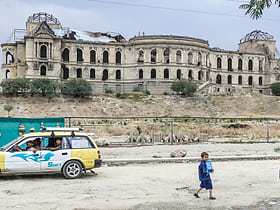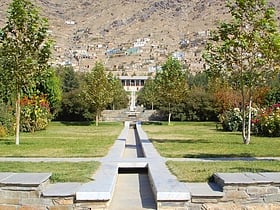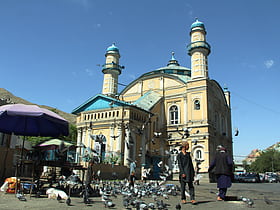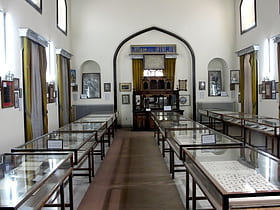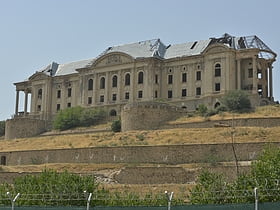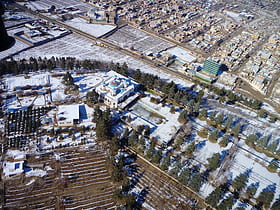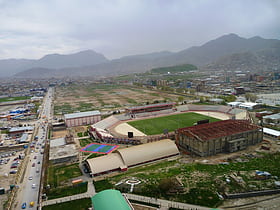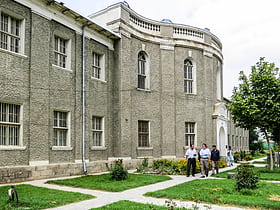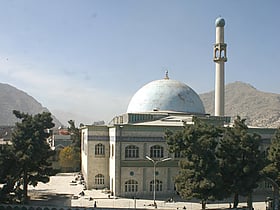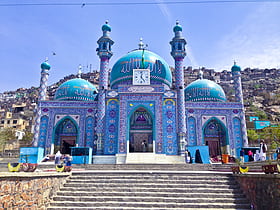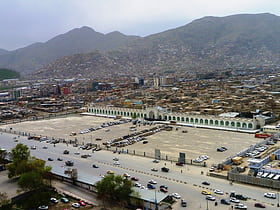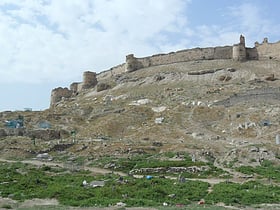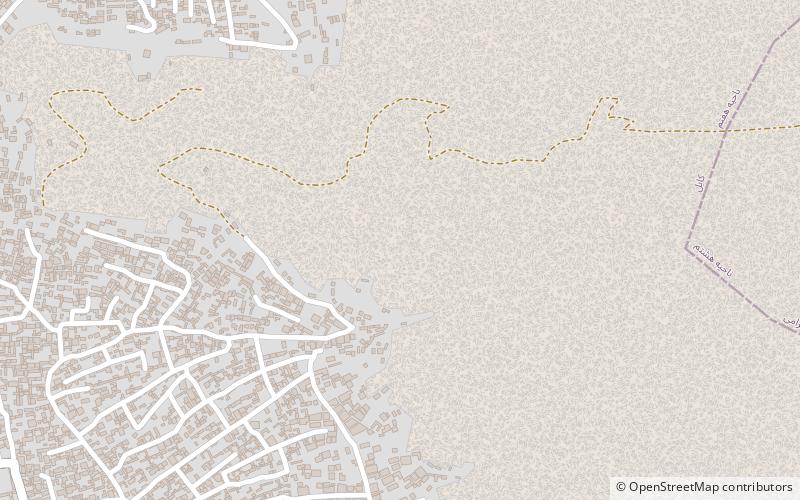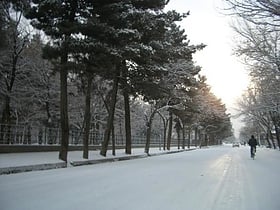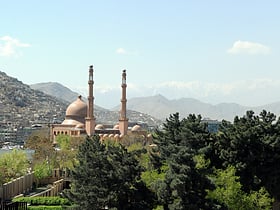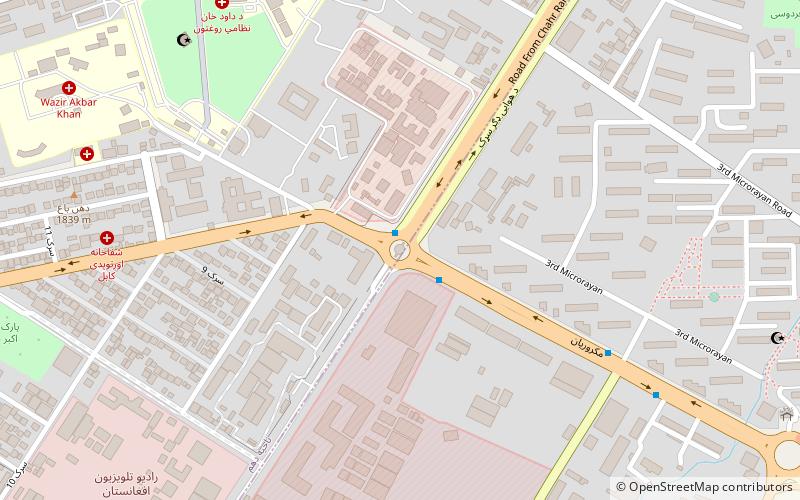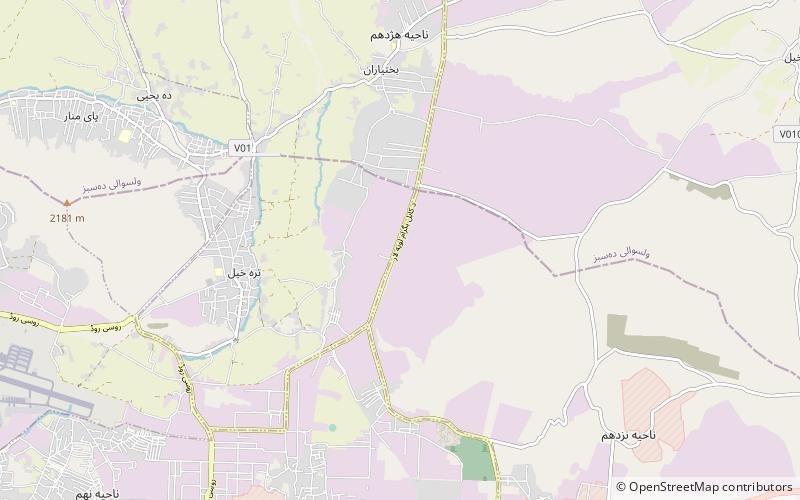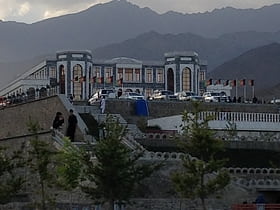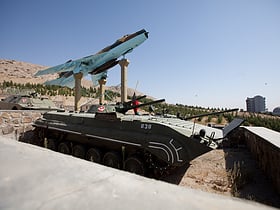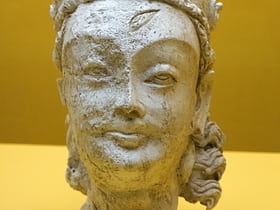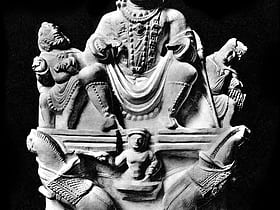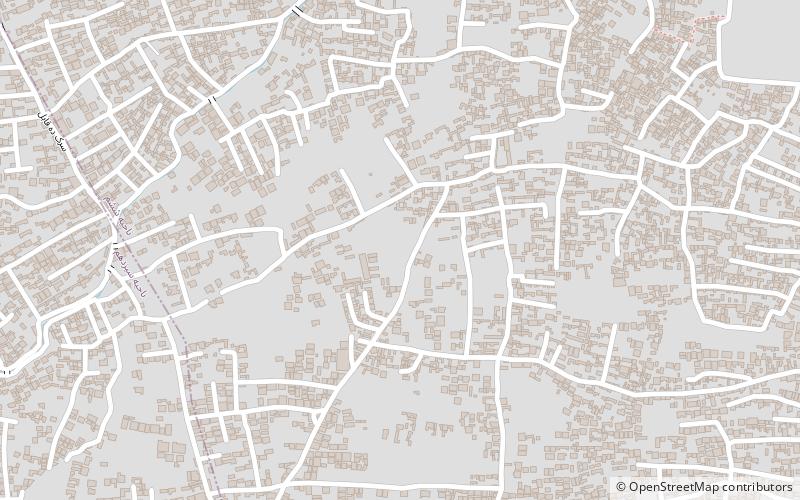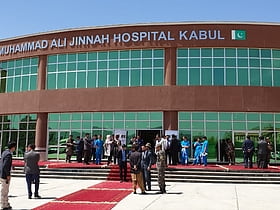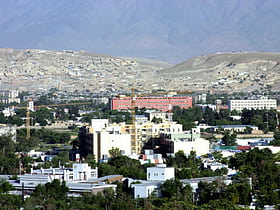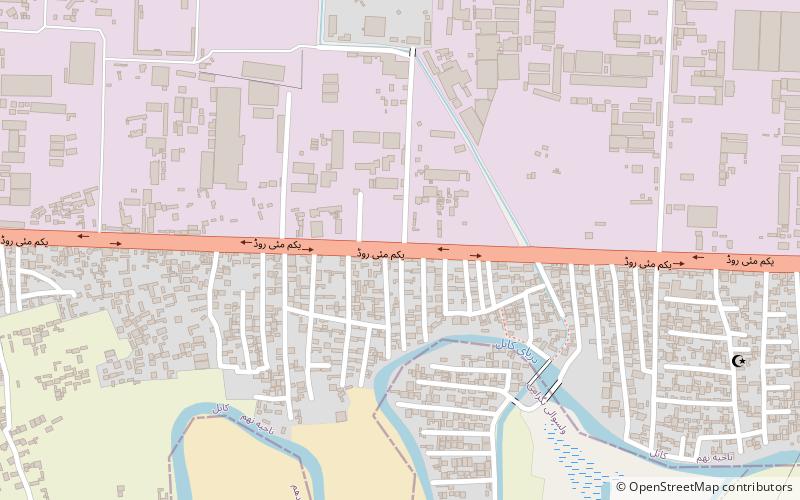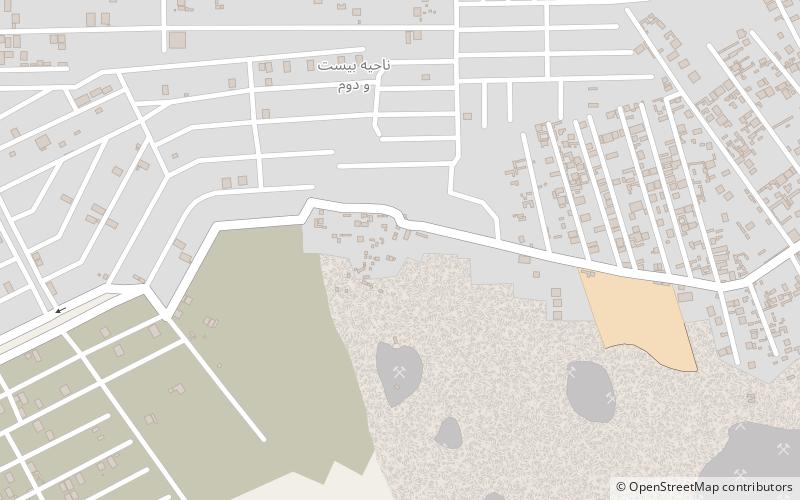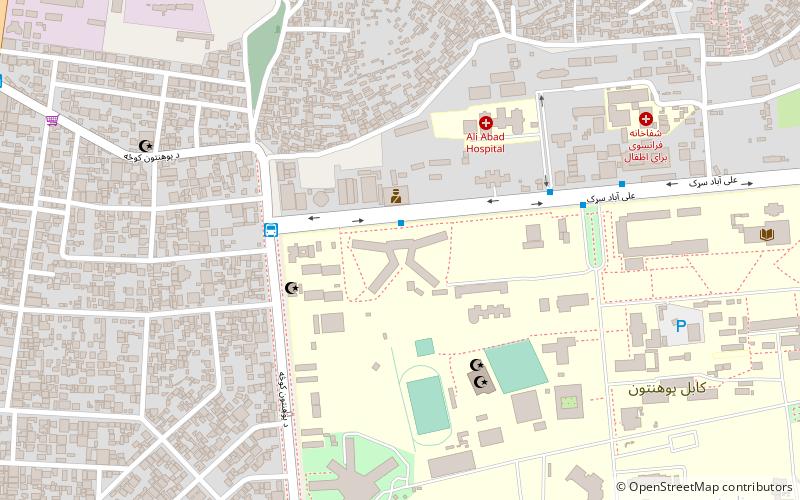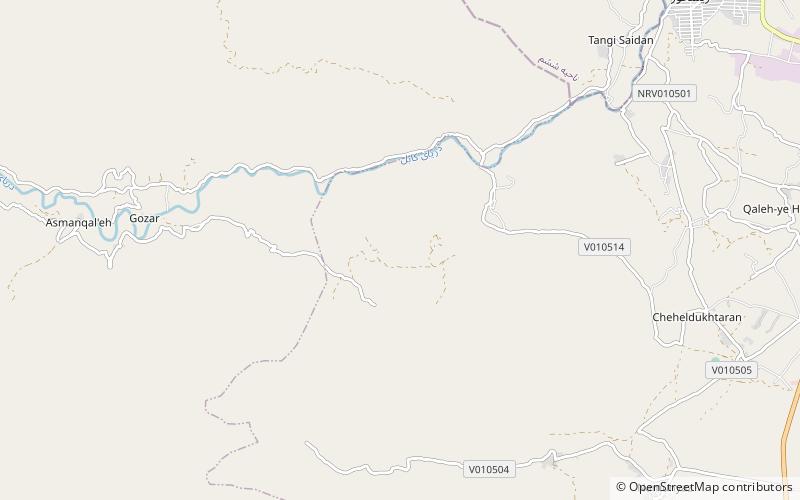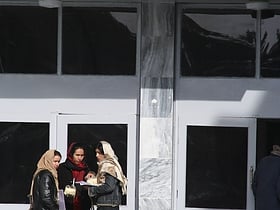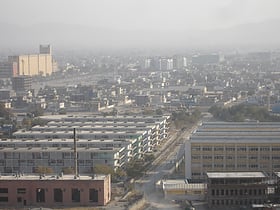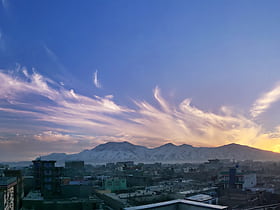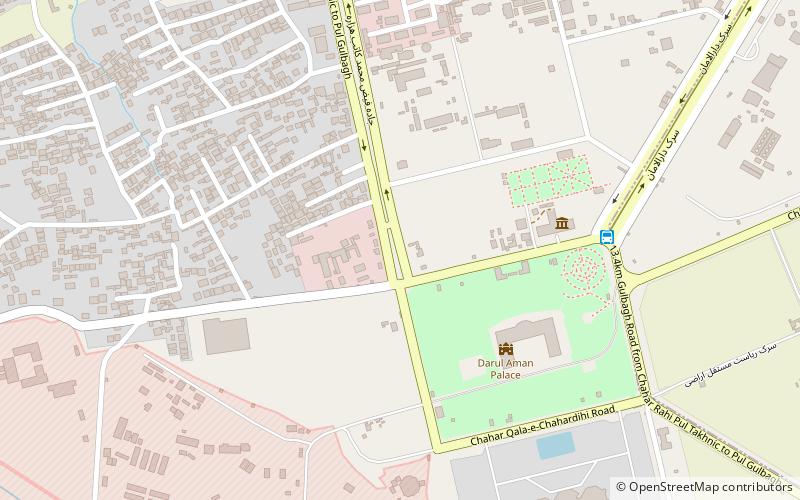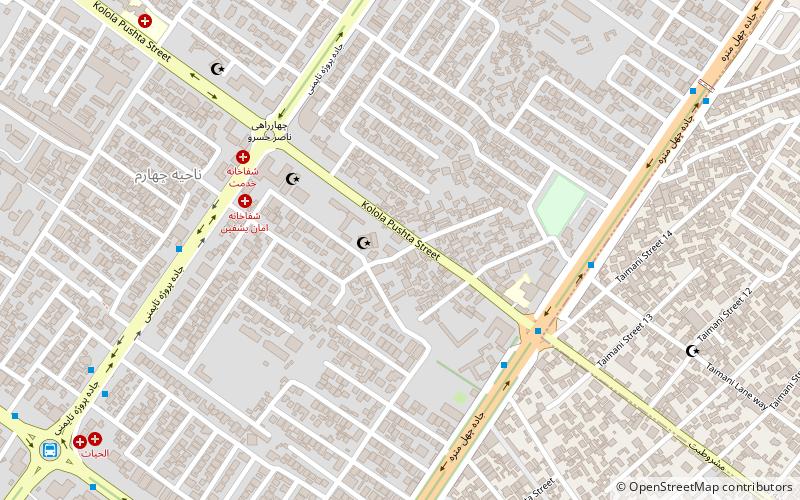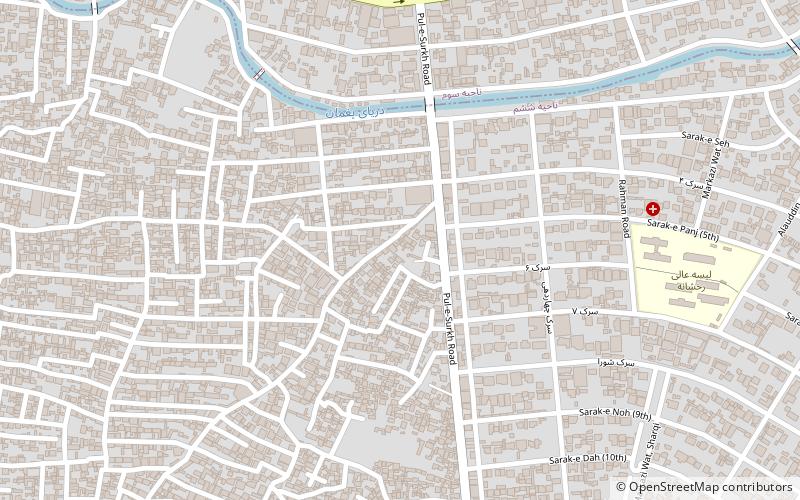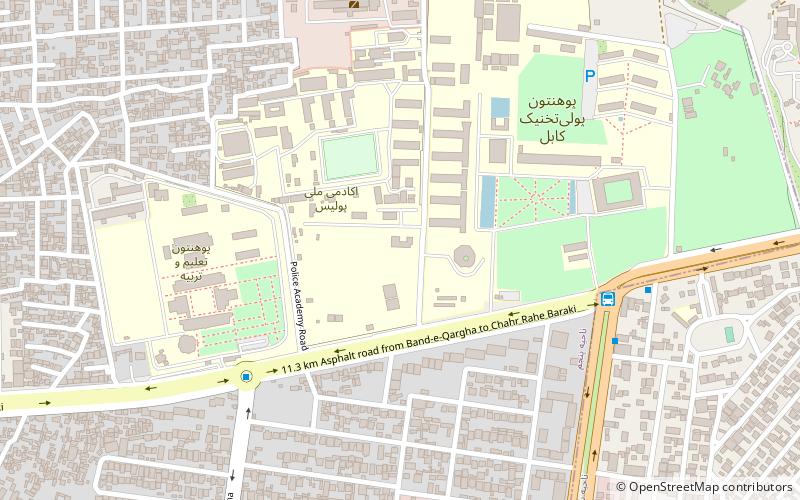Kabul: Sightseeing
Places and attractions in the Sightseeing category
Darul Aman Palace
Darul Aman Palace, an emblematic structure in the heart of Kabul, Afghanistan, stands as a poignant symbol of the country's tumultuous history and aspirations for peace. This grandiose palace, whose name translates to "abode of peace," was intended to be the...
Gardens of Babur
Historic resting place of Emperor Babur Nestled in the bustling city of Kabul, the Gardens of Babur stand as a serene oasis, offering a tranquil escape from the urban landscape. This historic park, dating back to the 16th century, was established by the first Mughal Emperor, Babur, after he chose the site...
Shah-Do Shamshira Mosque
Nestled in the heart of Kabul, Afghanistan, the Shah-Do Shamshira Mosque stands as a testament to the city's rich historical tapestry and cultural diversity. This mosque, known for its distinctive architecture, is a significant religious site for the local Muslim...
National Archives of Afghanistan
The National Archives of Afghanistan, nestled in the heart of Kabul, stands as a testament to the rich and varied history of this resilient nation. As a museum and repository of the country's historical documents, it houses an invaluable collection of manuscripts...
Kabul Zoo
Animals from Afghanistan and South Asia The Kabul Zoo stands as a beacon of resilience in the heart of Afghanistan's war-torn capital, Kabul. Despite the tumultuous events that have unfolded around it, the zoo has managed to provide a rare opportunity for leisure and education to the city's inhabitants.
Tajbeg Palace
Nestled amidst the rugged beauty of Afghanistan's capital, Tajbeg Palace stands as a historic emblem of Kabul's rich cultural tapestry. This regal edifice, also known as the Queen's Palace, is a poignant reminder of Afghanistan's royal past and the country's complex...
Bagh-e Bala Palace
Perched atop a hill overlooking the bustling city of Kabul, the Bagh-e Bala Palace stands as a storied relic of Afghanistan's rich history. This regal palace, with its distinctive characteristics, was originally built in the 19th century, under the reign of Amir Abdur...
Chaman-e-Hozori
Chaman-e-Hozori stands as a verdant oasis in the heart of Kabul, Afghanistan, offering a much-needed respite from the bustling city life. This expansive park is a popular destination for families, friends, and individuals seeking a peaceful environment to relax...
National Museum of Afghanistan
Artifacts dating back several millennia The National Museum of Afghanistan, nestled in the heart of Kabul, is a treasure trove of the country's rich and diverse history. Founded in 1919, the museum has stood as a testament to Afghanistan's complex past, housing artifacts that span over several millennia.
Pul-e Khishti Mosque
The Pul-e Khishti Mosque stands as a beacon of spiritual and cultural significance in the bustling city of Kabul, Afghanistan. As the largest mosque in the capital, Pul-e Khishti serves not only as a central hub for worship but also as a historical monument that...
Sakhi Shrine
The Sakhi Shrine is a revered religious site nestled in the bustling city of Kabul, Afghanistan. This significant cultural and spiritual landmark serves as a testament to the rich tapestry of Afghan history and is deeply rooted in the local community's reverence for...
Id Gah Mosque
The Id Gah Mosque, nestled in the heart of Kabul, Afghanistan, stands as a profound symbol of Islamic faith and Afghan heritage. This grand mosque, which translates to "Prayer Ground Mosque," is one of the oldest and largest places of worship in the country.
Bala Hissar
Perched on a hill at the south end of Kabul, Afghanistan, Bala Hissar is a historic fort with a commanding view of the city and its surrounding landscapes. This ancient citadel, whose name translates to "High Fortress" in Persian, has stood as a silent sentinel...
Chihil Sutun
Chihil Sutun, also known as the Forty Columns Palace, is an emblematic historical site nestled in the heart of Kabul, Afghanistan. This 19th-century palace, a quintessence of Afghan architecture, is named for its reflective pool that creates the illusion of forty...
Shar-e Naw Park
Nestled in the heart of Kabul, Shar-e Naw Park offers a tranquil oasis amid the bustling city life of Afghanistan's capital. This verdant sanctuary is a testament to the resilience and beauty of Kabul and stands as a symbol of peace and recreation for its residents.
Abdul Rahman Mosque
The Abdul Rahman Mosque, a significant religious and architectural landmark, graces the city of Kabul, Afghanistan. This mosque, often referred to as the Grand Mosque of Kabul, is not only a place of worship but also a symbol of the Islamic faith in the region.
Massoud Square
Massoud Square is a prominent landmark located in the heart of Kabul, Afghanistan. Named in honor of Ahmad Shah Massoud, the revered Afghan political and military leader, the square serves as a poignant reminder of the country's turbulent history and the enduring...
Sherpur Cantonment
Nestled within the bustling city of Kabul, Afghanistan, the Sherpur Cantonment stands as a serene and poignant reminder of the country's history. Known primarily for its cemetery, this site serves as a final resting place for many of the nation's military personnel...
Minar-i Chakri
The Minar-i Chakri, a historical monument located in the city of Kabul, Afghanistan, stands as a silent witness to the rich heritage of the region. This ancient minaret, dating back to the Durrani Empire in the 18th century, is an important relic of Afghanistan's past.
Gurdwara Karte Parwan
Gurdwara Karte Parwan is a beacon of spiritual solace and cultural significance nestled in the bustling city of Kabul, Afghanistan. This sacred Sikh shrine serves as a testament to the rich religious diversity and historical tapestry of Afghanistan.
Tomb of Timur Shah Durrani
Nestled in the heart of Kabul, Afghanistan, lies the historical tomb of Timur Shah Durrani, an emblematic reminder of the nation's rich and complex past. As the son of Ahmad Shah Durrani, the founder of the Durrani Empire, Timur Shah was a prominent figure, with his...
Paghman Hill Castle
Paghman Hill Castle, also known as the Paghman Palace, stands as a historical emblem within the scenic landscapes of Kabul, Afghanistan. This regal structure, although now in ruins, continues to hold a significant place in the cultural heritage of the region.
Qargha Reservoir
Qargha is a dam and reservoir at Qargheh, near Kabul, in Afghanistan. The reservoir and its peripheral areas provide for recreation facilities such as boating, surfing, golfing, etc. and has a hotel on its bank.
OMAR Mine Museum
The OMAR Mine Museum in Kabul, Afghanistan, contains a collection of 51 types of land mines out of the 53 that have been used in that country. OMAR is an acronym for the Organization for Mine Clearance and Afghan Rehabilitation.
Tepe Narenj
Tepe Narenj, also Tappe-e Narenj, is the archaeological site for the remains of a 5th or 6th century Buddhist monastery near Kabul, Afghanistan. The site has been excavated under the direction of Zafar Paiman.
Khair Khaneh
Khair Khaneh is an archaeological site located near Kabul, Afghanistan. A Brahmanical Temple was excavated there in the 1930s by Joseph Hackin.
Kabul Library
Kabul Library is one of Afghanistan's oldest and largest libraries, located in the capital Kabul. It includes books in many languages and topics including a vast majority in Persian, Pashto, Urdu, Russian, and Arabic. The library was built by king Amanullah Khan. It still exists today and is open to public.
Arg
The Arg serves as the presidential palace in Kabul, Afghanistan. It sits on a 34-hectare site in District 2, between Deh Afghanan and the affluent neighborhood of Wazir Akbar Khan.
Amir Khusrou Balkhi Library
The Amir Khusrou Balkhi Library is a library in Afghanistan. In the 1990s, it held about 20,000 books, journals, newspapers and rare books. Materials were focused in history, literature, geography, and religion.
Hindki
Hindki is a term originally used by Pashtuns to denote people or communities of Indian origin that they have been in contact with.
Jinnah Hospital
Jinnah Hospital is a 200-bed hospital in Kabul, Afghanistan. It is currently the second-largest hospital in Afghanistan, and was built by the Pakistani government. Jinnah Hospital was opened for the public on 20 April 2019 during an inauguration ceremony.
Wazir Akbar Khan
Wazir Akbar Khan is a neighbourhood in northern Kabul, Afghanistan, forming part of District 10. It is named after the 19th century Afghan Emir Wazir Akbar Khan. It is one of the wealthiest parts in Kabul. Many foreign embassies were located there before the fall of Kabul to the Taliban, including the American and Canadian.
Deh Sabz District
Deh Sabz District is situated northeast of Kabul City in Afghanistan. It has a population of 100,136 people. About 70% are Pashtuns and 30% are Tajiks.
Bagrami District
Bagrami District is located in the central part of Kabul Province in Afghanistan. It is approximately a 30-minute drive east from the capital city, Kabul. The district headquarters is the town of Bagrami.
Kabul University
Kabul University is one of the major and oldest institutions of higher education in Afghanistan. It is in the 3rd District of the capital Kabul, near the Ministry of Higher Education.
Char Asiab District
Char Asiab District is a district, approximately 11 km south of the city of Kabul, and is situated in the southern part of Kabul province, Afghanistan. It has a population of 32,500 people. The majority are Pashtuns, followed by Tajiks as well as a few Hazaras.
Kabul Medical University
Kabul Medical University formerly known as Kabul Medical Institute is located in Kabul, Afghanistan on the campus of Kabul University. The medical institution was initially maintained by collaboration with the Turkish and French sponsors. KMF developed into a single autonomous University in 2005.
Polytechnical University of Kabul
Kabul Polytechnic University is the main center of educating engineers in Kabul, Afghanistan. It was founded on 13 October 1963 as Kabul Polytechnic Institute and is located in 72 hectares of land in Karte Mamourin, north-western Kabul. In the opening ceremony government officials from both Afghanistan and other countries were present.
Dashte Barchi
Dashte Barchi is a settlement located in western Kabul, Afghanistan. Previously barren and agricultural, Dashte Barchi became populated in the early 2000s by newcomers from the provinces, mostly ethnic Hazaras from Maidan Wardak, Ghazni and Parwan, and some Kochi Pashtuns. It is mostly informally-developed.
Darulaman
Darulaman is a locality in the south-western fringes of Kabul, Afghanistan, forming part of District 6. The suburb was a planned city built in the 1920s under King Amanullah Khan.
Taimani
Taimani, also spelled Taimany and also called Proja-e-Taimany or Taimani Project, is a locality in north-western Kabul, Afghanistan. It forms part of administrative District 4. Taimani is located near Shahr-e-Naw, Kolola Pushta, and Khair Khana.
Chindawol
Chindawol or Chendavol is a neighborhood in the older section of Kabul, Afghanistan.
Kārte Seh
Kārte Seh, is a neighborhood in western Kabul, Afghanistan, part of District 6. It is a planned and middle-class settlement and is associated with Afghanistan's Shia Hazara minority. Karte Seh is also famous for being the site of the orphanage Aziza is sent to in Khaled Hosseini's novel A Thousand Splendid Suns.
Afshar
Afshar, is a hillside settlement situated in western Kabul, the capital of Afghanistan. Most of its population are of the Shia-Afshar ethnic group.
Map

